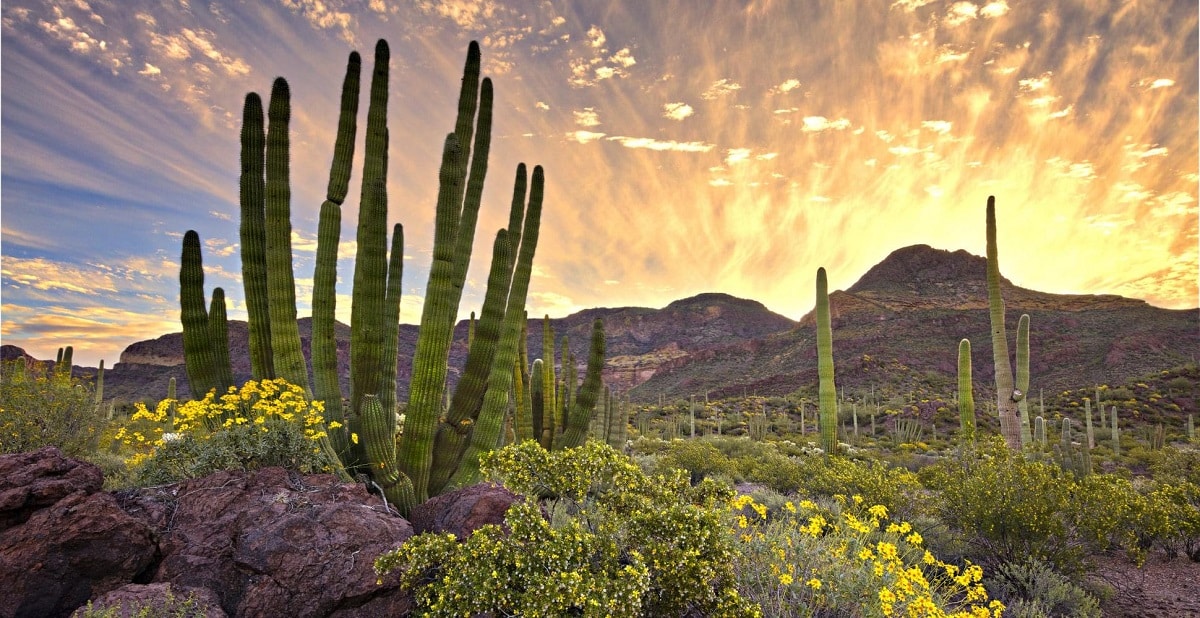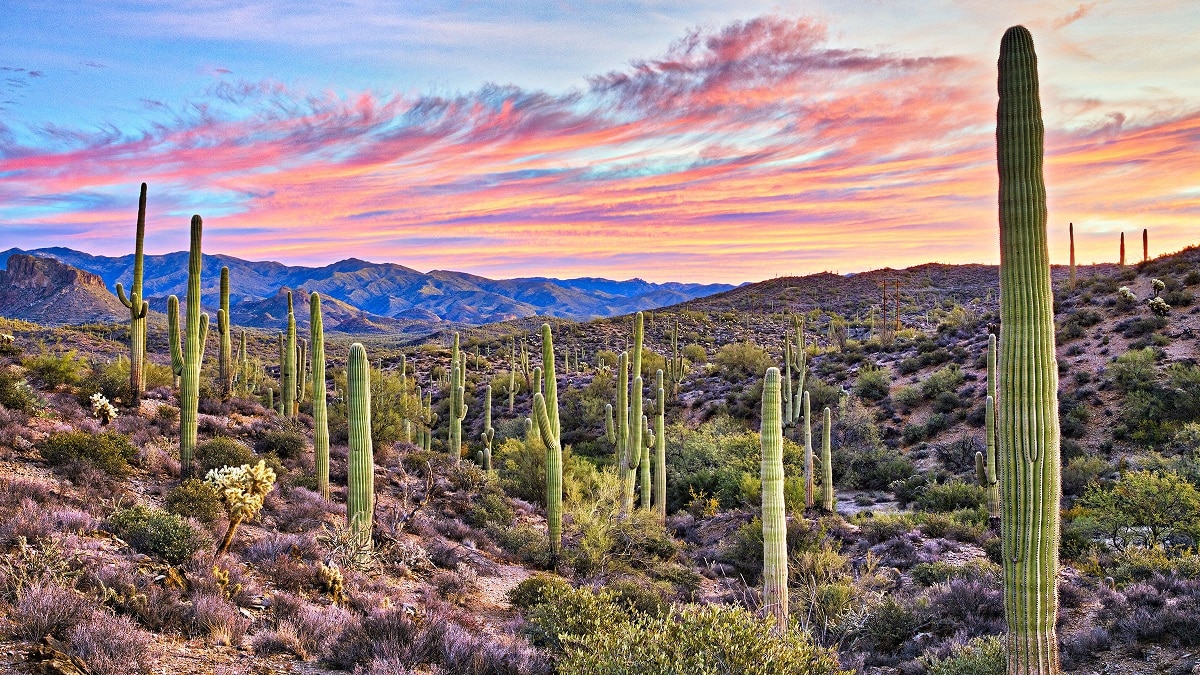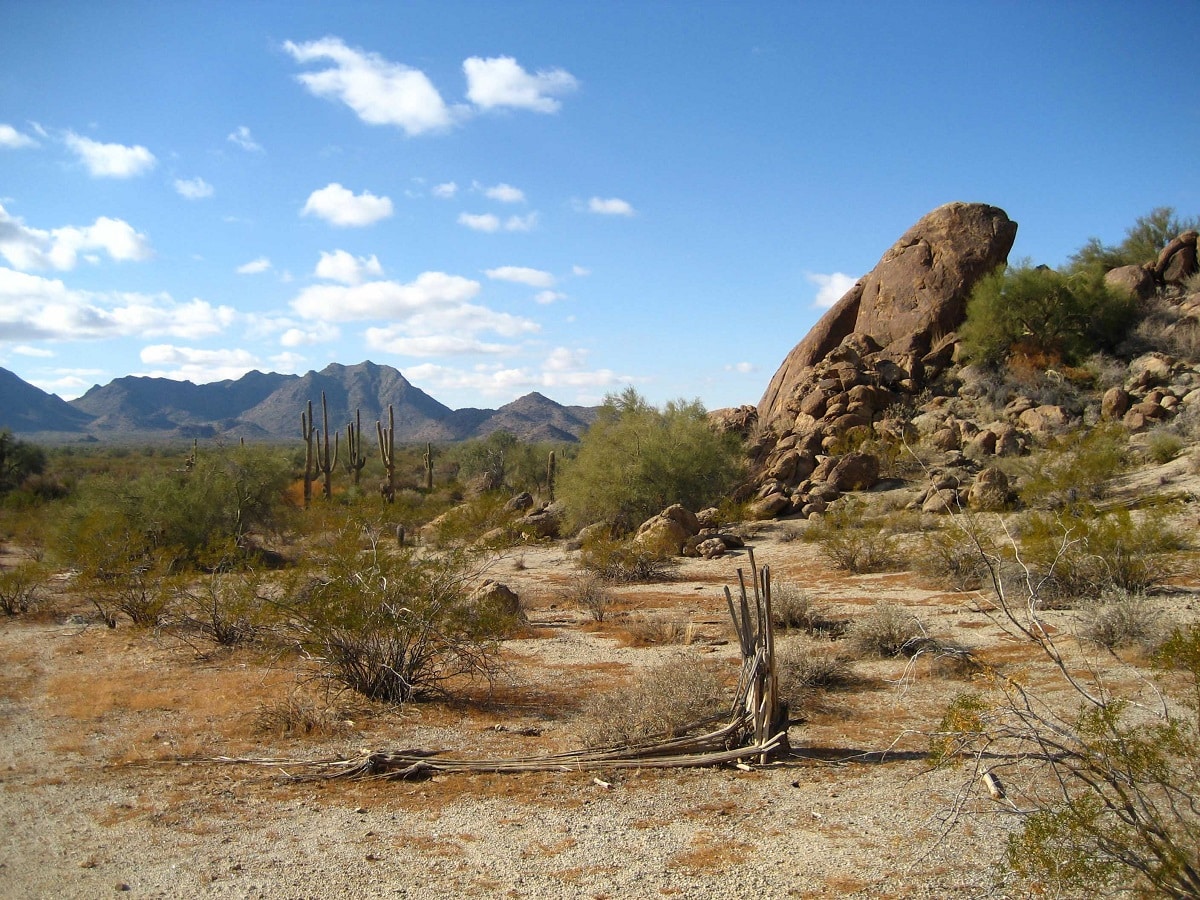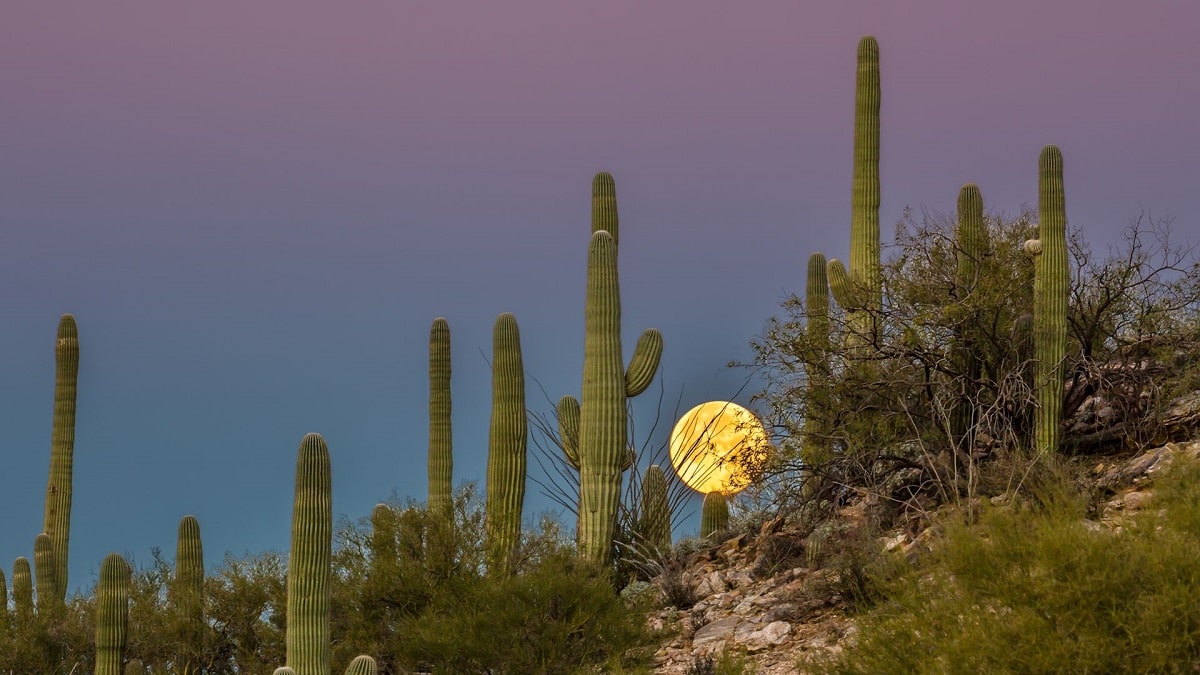
El Sonoran Desert it is part of a vast corridor of arid ecosystems in North America that extends from southeastern Washington state to Hidalgo state in the central highlands of Mexico, and from central Texas to the ocean coast. Baja California Peninsula.
In this article we are going to tell you everything you need to know about the Sonoran desert, what its characteristics and importance are.
Key features

This arid corridor of almost one million square kilometers is divided into four large deserts:
- The Great Basin.
- The Mojave Desert.
- The Sonoran Desert.
- The Chihuahuan Desert.
The Greater Chihuahuan Desert consists of a series of lowlands that surround the Gulf of California or Sea of Cortez. Although it is a single entity in the United States, when it enters Mexico it bifurcates into an arid continental region, technically known as the Sonoran Desert, and a coastal desert that extends along the Baja California peninsula. Known as the Baja California Desert.
This complex Sonora-Baja California desert, as we define it here, includes 101,291 square kilometers of Baja California desert and 223,009 square kilometers of true Sonoran desert. Overall, 29 percent (93,665 square kilometers) of this wilderness area is in the United States, with the remaining 71 percent (230,635 square kilometers) in Mexico. We estimate that up to 80% of the wilderness area remains intact
Compared to the surrounding area, the mountains in the Sonoran Desert they are not high, on average, about 305 meters. The most famous mountains are the Chocolate and Chaquewara mountains in California, the Cofa and Haquajara mountains in Arizona, and the Pinacote mountains in Mexico.
Sonoran Desert Climate

The region is one of the driest and hottest in North America, with summer temperatures exceeding 38°C. Winters are mild, with January temperatures between 10ºC and 16ºC. Most deserts receive less than 250 mm of precipitation per year. For this reason, almost all of the water used comes from the subsoil or from various rivers, such as the Colorado, Gila, Salt, Yaqui, Fuerte and Sinaloa, which cross the desert from the mountains and surroundings.
Irrigated agriculture is an important part of the region's economy, and the water table has dropped dramatically since the 1960s. The Central Arizona Project is a large make-up water system that supplies millions of gallons of water daily. from the Colorado River to the eastern desert, especially the Phoenix and Tucson areas.
Flora
In this large area, the flora goes through two phases, a fertile season and a dry season, which is the most difficult for the animals that inhabit it. Like all the great deserts of North America, the Sonoran Desert is characterized by large cacti, a type of cacti that frequently appears in cowboy movies. These interesting cacti range in size from the size of a thumb up to 15 m, they do not have leaves, they have thorns to protect themselves from thirsty animals, they have a frilly succulent stem, their roots are designed to trap as much water as possible. It can reach up to 10 tons, with four-fifths or more of that being water. They can also live up to 200 years and grow slowly, growing a meter every 20 to 50 years.
While the desert is an isolated and apparently barren world during droughts, when the first rain falls, life reappears as a paradise. Everything is full of color cacti blooming in blue, red, yellow and white, frogs emerging from dry beds from the lakes to reproduce, dormant dandelion seeds that bloom and produce more seeds to ensure their immortality.
Everything becomes a green and colorful world. Trees such as palo blanco, palo iron, toote, palo verde, and mesquite have other adaptation systems, such as growing on stream banks and hillsides, shorter than the compensating wind, and they have very hard wood and long roots that can wear down. Permeate the earth until you find the reservoir. For example, a mesquite tree is almost rooted when it is young, but once it finds water it will grow.
Sonoran Desert Wildlife

In turn, the fauna of the Sonoran desert uses its own survival system, and insects such as spiders and scorpions have learned to live comfortably in this contrasting world. Some shrimp eggs lie dormant in dry ponds, and when they fill, the animals spring to life. Incredible as it may seem, there are about 20 species of fish in the deserts of the United States and Sonora, and each of them has also found a way to survive in a climate contrary to their nature. On the other hand, there are also a large number of reptiles such as lizards, iguanas, lizards, snakes, turtles and snakes that make their homes in the desert.
Birds are also present, and on an afternoon in Aguayes you can see sparrows, woodpeckers, pigeons, quail and wayfarers coming to drink, and these last two can be seen running through the bushes. There are also birds of prey, such as the sparrowhawk, which feed on small birds and rodents, such as the kangaroo rat or the kancito.
The other fauna of the Sonoran Desert is made up of mammals, many of which, such as coyotes, foxes, rodents, hares and rabbits, live in underground burrows perfectly isolated from the outside world, both from heat and sun, cold and drought. , they will accumulate food in these shelters to survive. However, cougars live in caves and rock shelters.
Other desert animals like bighorn sheep and mule deer that live on inaccessible rocks and mountainsThey are prized hunting trophies for their beautiful antlers, which is why poachers always seek them out and put them on the verge of extinction.
I hope that with this information you can learn more about the Sonoran desert and its characteristics.